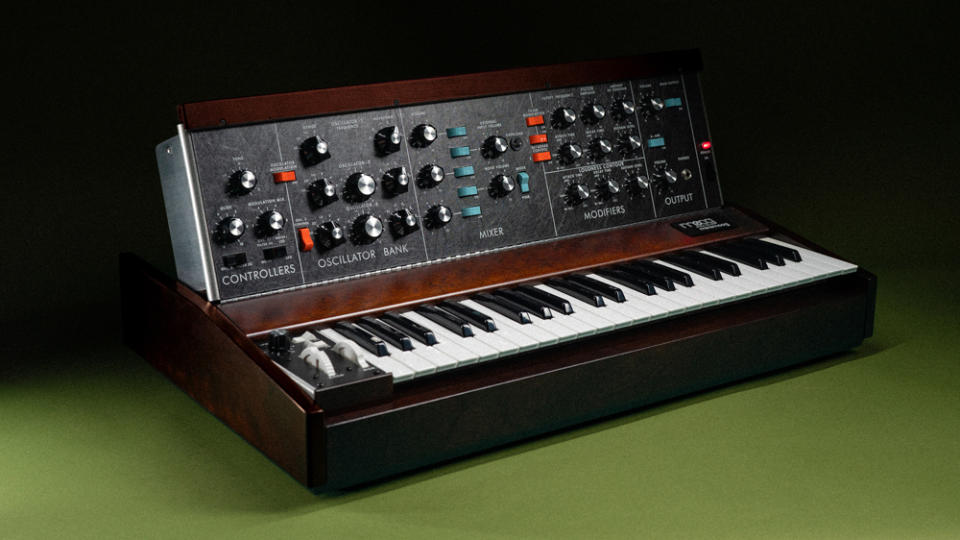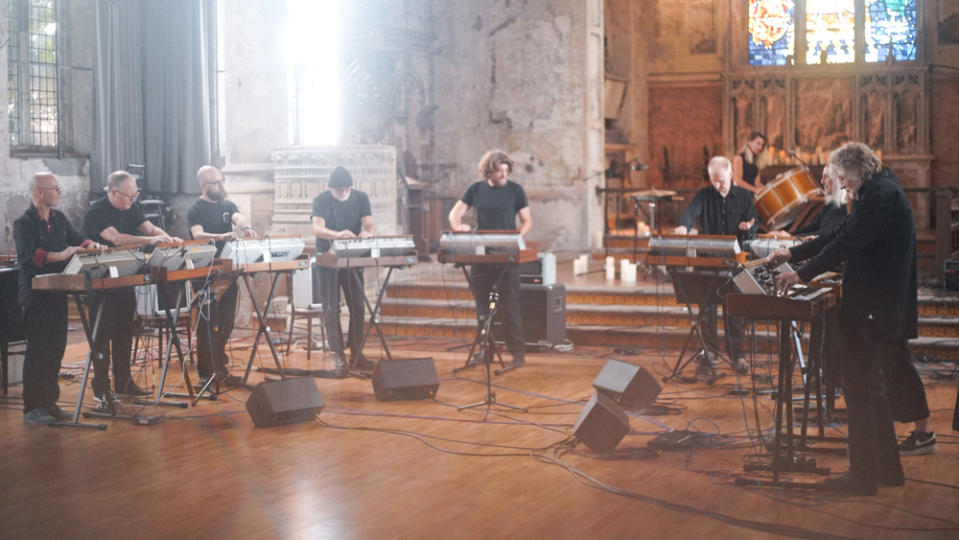The Innovative Synthesizer Used by Frank Zappa and Pink Floyd Has Been Resurrected

- Oops!Something went wrong.Please try again later.
- Oops!Something went wrong.Please try again later.
Music wasn’t always electronically amplified, and by the time it was, it certainly wasn’t synthesized. While using an electronic keyboard to create a string orchestra is taken for granted today, it wasn’t until the 1960s when Moog’s modular synthesizers opened the floodgates of musical invention, allowing composers to create a tapestry of colossal sound.
The Minimoog Model D came around in 1970, riding a wave of musical creativity swelling recording studios and concert venues around the world. It was the first portable synthesizer, combining the attributes of the big Moog with the accessibility of pre-wired modules, allowing musicians to play the instrument intuitively without the use of patch cables and an elaborate learning curve.
More from Robb Report
Luxman's New Integrated Amplifier Is an All-in-One Jewel Box of Sound
Focal's New Utopia Headphones Deliver a Blissful Listening Experience
Bowers & Wilkins's Newest Headphones Deliver Stellar Sound and Stellar Noise Cancellation
The Model D was used by seemingly everyone, including Herbie Hancock, Frank Zappa, Pink Floyd and Kraftwerk, creating new genres of music styles and never-before-heard-of sounds. A quick look at chart-topping recordings showcasing the Minimoog spans the pop landscape, from Michael Jackson’s Thriller to Bob Marley’s Catch a Fire. Jazz pioneer Sun Ra became an early adopter of the instrument when Bob Moog lent him a prototype prior to the original Minimoog’s commercial release. An ever-present voice in funk, disco, techno and hip-hop, it has equally informed the work of composers within the “contemporary classical music” community.

This isn’t the first time that Moog has brought back a classic component. In 2020, Moog released the Claravox Centennial, its modern interpretation of the theremin from 1919. With a storied heritage and influence far exceeding its diminutive dimensions, Dr. Bob Moog’s original Minimoog Model D lives on in spirit with this new version, which is once again being manufactured by hand at Moog headquarters in Asheville, N.C. The signature of the sound engine and the audio signal path are identical to the 1970s model, with some functional improvements—introduced in 2016—that expand the capabilities of the instrument to include MIDI integration into modern studio systems. And a revised pitch wheel enables wild performance flourishes for performers so inclined.

Care is taken in parts selection, respecting the original component placement and through-hole circuit-board connections, and everything is housed in a hand-finished aluminum chassis. The handmade Appalachian cherry hardwood cabinet, with a rich walnut stain, lends a warmth and authenticity to the instrument’s look and feel. The capabilities of the Minimoog are amply demonstrated by the Will Gregory Moog Ensemble performing “Archimedes Screw,” a composition played by 10 musicians, each employing a Model D to embellish the composition with layer-upon-layer of sound.
Measuring less than 30 inches in width and weighing only 32 pounds, the $4,999 Minimoog Model D is certainly portable, made more so with an available weather-resistant hard-side road case or soft, ballistic Cordura case.
Click here for more photos of the Minimoog Model D synthesizer.

Sign up for Robb Report's Newsletter. For the latest news, follow us on Facebook, Twitter, and Instagram.

